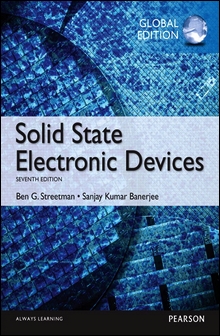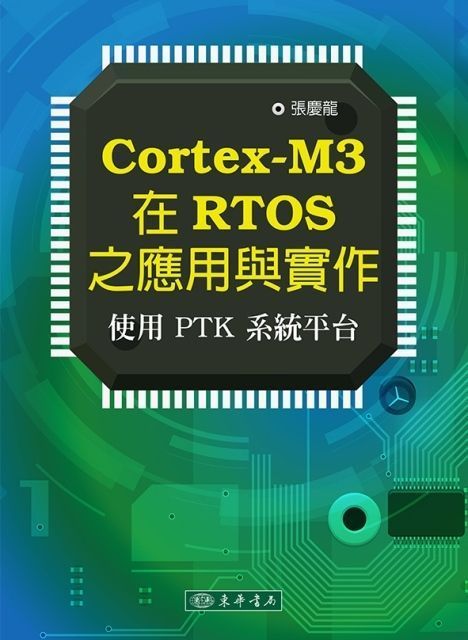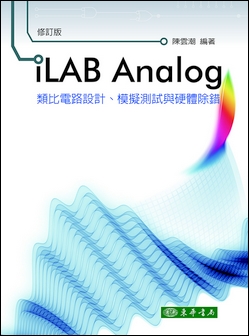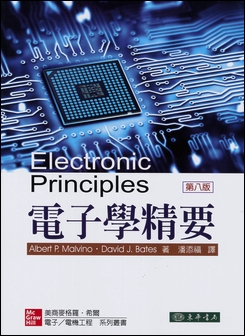書籍分類
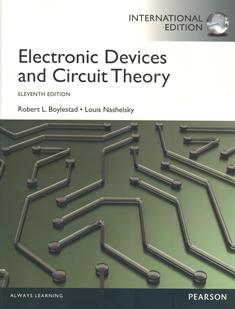
Electronic Devices and Circuit Theory 11/e
作者:Boylestad, Nashelsky
原價:NT$ 1,400
ISBN:9780133058017
版次:11
年份:2013
出版商:Pearson Education
頁數/規格:906頁/平裝雙色
版次:11
年份:2013
出版商:Pearson Education
頁數/規格:906頁/平裝雙色
內容介紹 本書特色 目錄
- Description
Electronic Devices and Circuit Theory, Eleventh Edition, offers students a complete, comprehensive survey, focusing on all the essentials they will need to succeed on the job. Setting the standard for nearly 30 years, this highly accurate text is supported by strong pedagogy and content that is ideal for new students of this rapidly changing field. The colorful layout with ample photographs and examples enhances students’ understanding of important topics. This text is an excellent reference work for anyone involved with electronic devices and other circuitry applications, such as electrical and technical engineers.
- Features
- For ac analysis, the text emphasizes the difference between the no-load and loaded gain, including examples of how each affects the gain and characteristics of a system.
- Entire sections remain to demonstrate the impact of the source and load resistance on the system response, although now the material is an integral part of the ac analysis chapter of the device under discussion.
- Color is used for instructional purposes wherever appropriate to identify important parameters, network regions, and results, as well as to enhance students’ understanding of figures.
- This approach improves readability. Summaries and equation lists appear near the end of each chapter for review and study.
- There are more than 100 practical applications at the end of each chapter, helping students learn how theory is applied in real-world settings.
- The latest versions of PSpice, Multisim, and Mathcad are covered in specific sections throughout the text, including descriptions of important differences in the application of each software package.
- PSpice and Multisim are both covered in an effort to ensure students are familiar with software packages they might use in future studies or the real world, or both.
- Selected circuit diagrams in the text are rendered in Multisim 2001, Multisim 7, and PSpice 9.2 and these circuit files are provided on the book's CD-ROM and for quick, easy download at the book's companion website (www.prenhall.com/boylestad).
- Multisim and PSpice are widely regarded as excellent simulation tools for classroom and laboratory learning but students don't necessarily have to use these circuit files with this textbook.
- Circuits created in later more current releases of Multisim and PSpice may also be available at the companion website.
- The companion site contains Multisim and PSpice circuit files, chapter summary reviews, and additional multiple choice questions, providing students with an interactive resource that brings the subject matter to life.
- Updated photos, artwork, and data sheets reflect device components available today, covering characteristics of components that have changed rapidly in recent years.
- The parameters associated with the content and all the example problems are more consistent with device characteristics available today. Some devices, no longer available or used very infrequently, were dropped to insure proper emphasis on current trends.
- Computer programs have been rerun and the descriptions updated to include the effects of using OrCAD version 16.3 and Multisim version 11.1. Introductory chapters now assume a broader understanding of computer methods resulting in a revised introduction to the two programs.
- Over 100 new problems have been added throughout the text, and significant updates have been made to existing problems.
- Photos and biographies of important contributors to the material have been added throughout the text, including Sidney Darlington, Walter Schottky, Harry Nyquist, Edwin Colpitts, and Ralph Hartley.
- New sections added cover the impact of combined dc and ac sources on diode networks, multiple BJT networks, VMOS and UMOS power FETs, Early voltage, frequency impact on the basic elements, effect of R on an amplifier’s frequency response, Gain-Bandwidth product, and more.
- Completely rewritten sections include bias stabilization, current sources, feedback in the DC and AC modes, mobility factors in diode and transistor response, transition and diffusion capacitive effects in diodes and transistor response characteristics, reverse saturation current, breakdown regions (cause and effect), and the hybrid model.
- The section on solar cells now offers a detailed examination of the materials employed, additional response curves, and a number of new practical applications.
- Coverage of the Darlington effect has been totally rewritten and expanded to include detailed examination of the emitter-follower and collector gain configurations.
- Coverage of transistors now includes detail on the cross-bar latch transistor and carbon nanotubes.
- Coverage of LEDs now includes an expanded discussion of the materials employed, comparisons to today’s other lighting options, and examples of the products defining the future of this important semiconductor device.
- The data sheets commonly included in a text of this type are now discussed in detail to insure a well-established link when the student enters the industrial community.
- Reorganized content can be found in the early DC chapters on diodes and transistors, in the discussion of current gain in the AC chapters for BJTs and JFETs, in the Darlington section, and in the frequency response chapters. In chapter 16 topics were dropped and the order of sections changed dramatically.
Using a systems approach, this edition represents an exhaustive effort to enhance the material that introduces the concept of system engineering.
New to This Edition
The eleventh edition has been updated to emphasize current trends in electrical devices, providing students with a real-world view of electrical engineering.
- Table of Contents
1. Semiconductor Diodes.
2. Diode Applications.
3. Bipolar Junction Transistors.
4. DC Biasing—BJTs.
5. BJT AC Analysis
6. Field Effect Transistors
7. FET Biasing.
8. FET Amplifiers.
9. BJT and JFET Frequency Response.
10. Operational Amplifiers.
11. Op-Amp Applications.
12. Power Amplifiers.
13. Linear-Digital ICs.
14. Feedback and Oscillator Circuits.
15. Power Supplies (Voltage Regulators).
16. Other Two-Terminal Devices.
17. pnpn and Other Devices.



